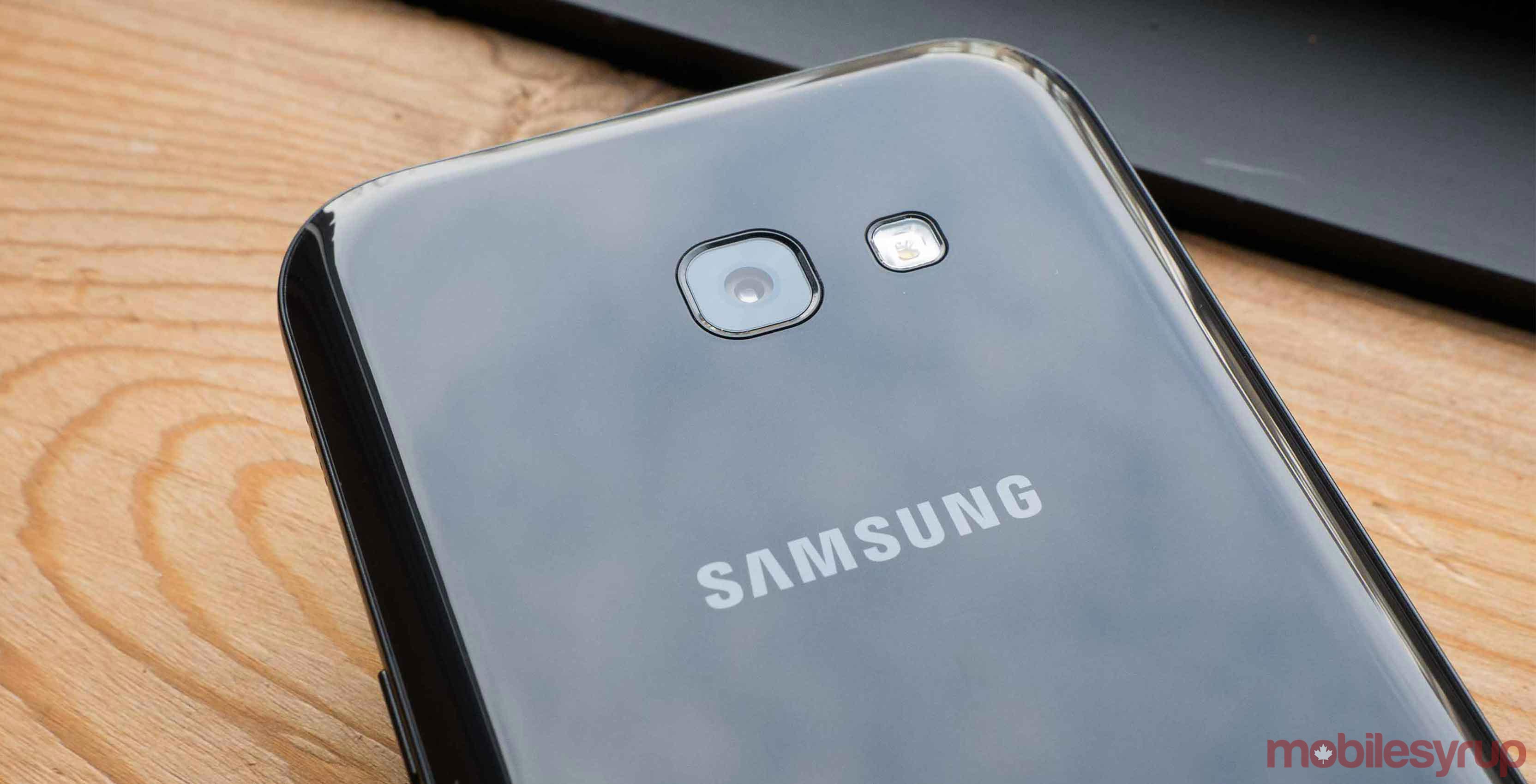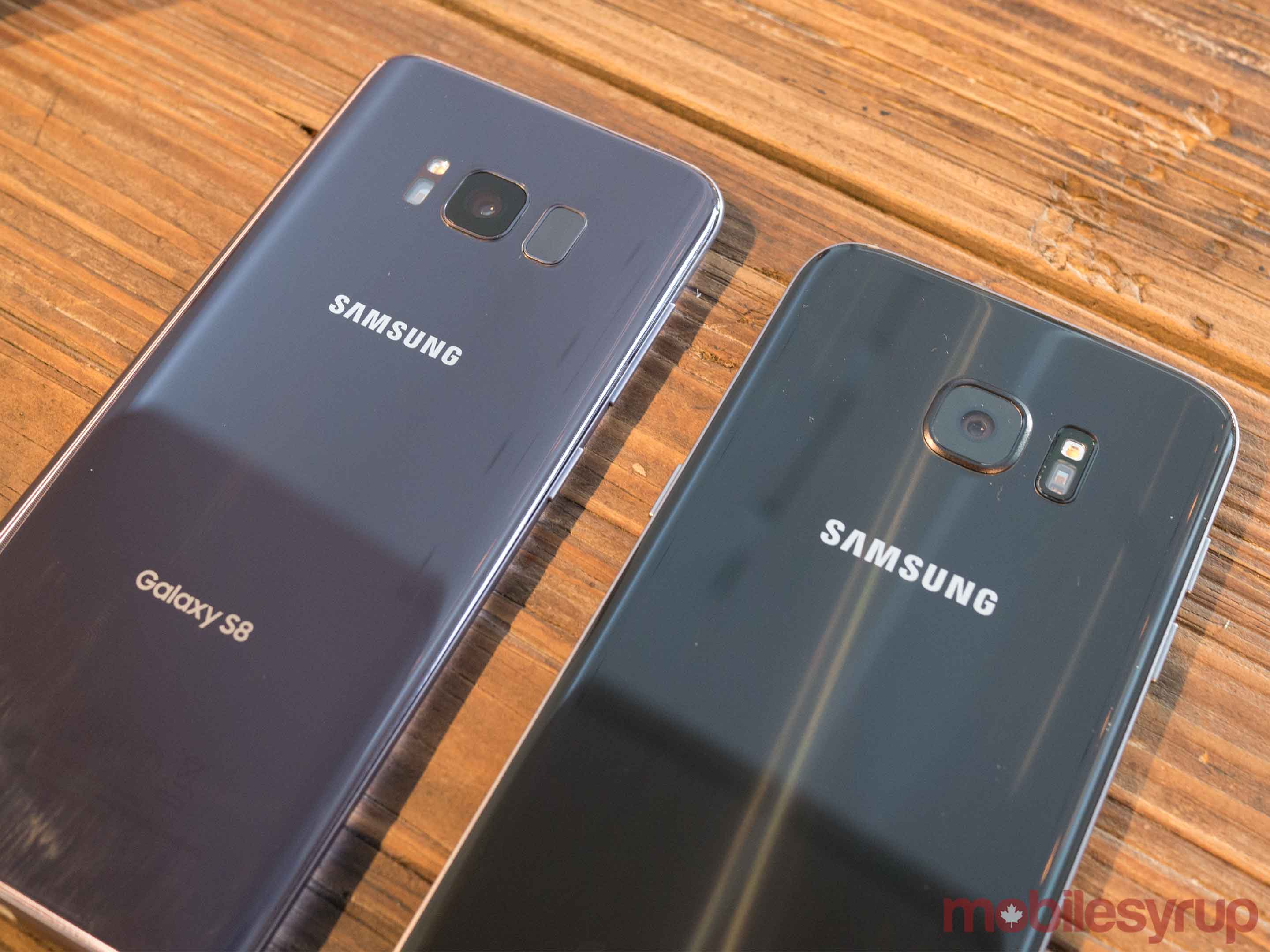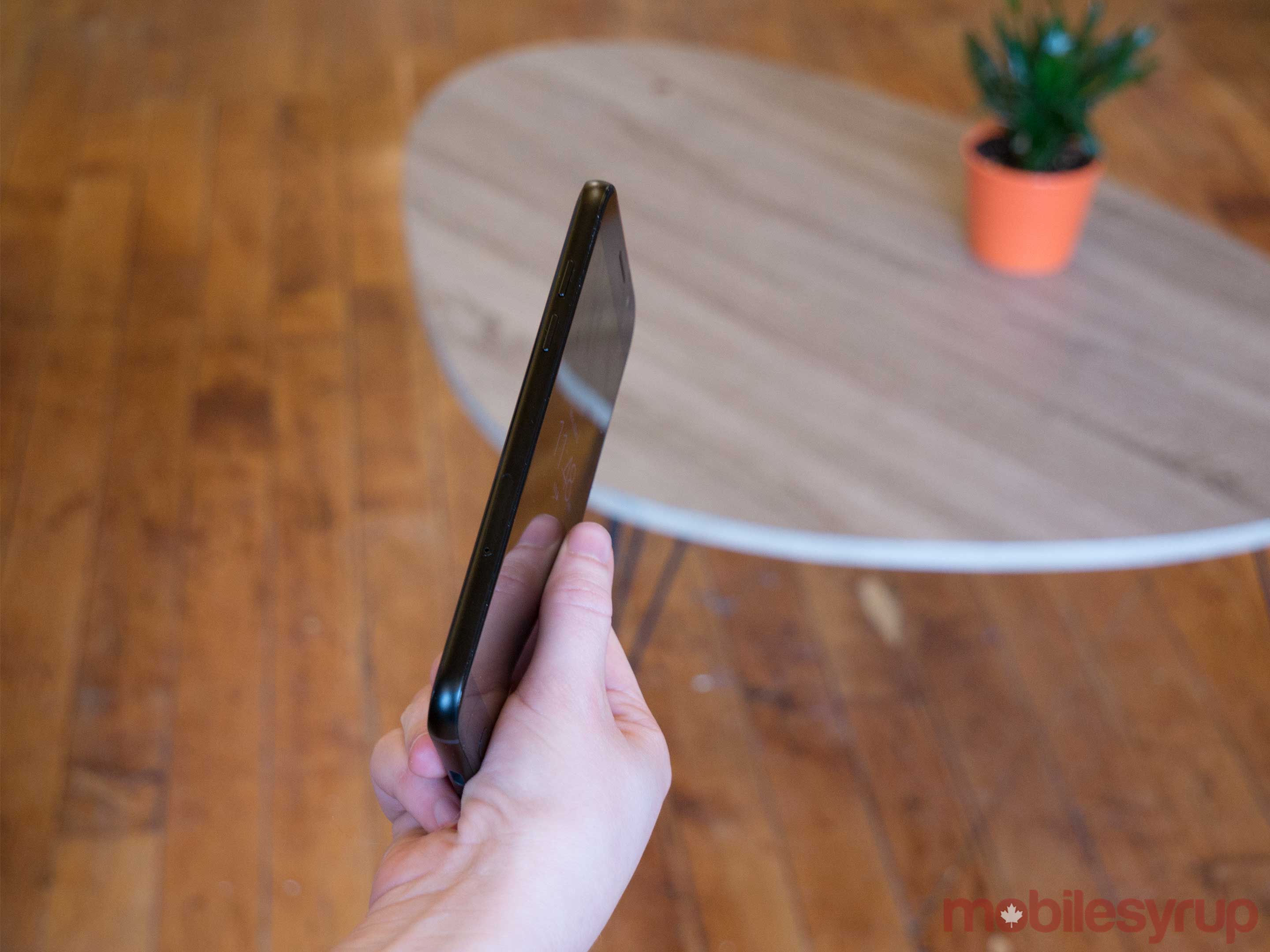
The Samsung Galaxy S8 and S8+ have finally been unveiled, but is the upgrade to the South Korean manufacturer’s latest smartphone really necessary for everyone?
We’re not even a quarter-way through the year and Samsung has already shown us three phone options: the surprisingly impressive Galaxy A5 and now the Galaxy S8 and S8+.
The Samsung Galaxy S series are high-end smartphones with equally high price tags, hitting the plus $1,000 CAD range when not purchased on a contract in Canada. The mid-range Samsung Galaxy A5, released back in January 2017, is almost half that cost at $525.
Samsung Galaxy A5 (2017)
Samsung Galaxy S8
Samsung Galaxy S7
Display
5.2-inch Super AMOLED display, 1080 x 1920 pixels
5.8-inch Super AMOLED display, 18.5:9 aspect ratio
5.1-inch Quad HD Super AMOLED
Processor
Exynos 7880
Snapdragon 835 (Exynos 8895 in Europe and other regions)
Exynos 8890
RAM
3GB
4GB of RAM
4GB
Storage
32GB (expandable)
64GB (expandable up to 256GB)
32GB + microSD
Dimensions (in.)
146.1 x 71.4 x 7.9 mm
148.9 x 68.1 x 8.0mm
142.4 x 69.6 x 7.9 mm
Weight
157g
152g
152g
Rear Facing Camera
16-megapixel (f/1.9, LED flash, AF)
12-megapixel (f/1.7, OIS)
12-megapixel f/1.7
Front Facing Camera
16-megapixel (f/1.9)
8-megapixel (f/1.7)
5MP front-facing camera f/1.7
OS
Android 6.0.1 Marshmallow
Android 8.0 Oreo
Android 6.0 Marshmallow
Battery
3000mAh (non-removable)
3,000 mAh
Non-removable Li-Ion 3,000mAh
Network Connectivity
GSM / HSPA / LTE
GSM/HSPA/LTE
LTE: B1/B2/B4/B5/B7/B8, HSPA: B1/B2/B4/B5/B8, GSM: 850, 900, 1800, 1900 MHz
Sensors
Accelerometer, Proximity, Geomagnetic, RGB Light, Hall, Fingerprint scanner, Barometer
Accelerometer, Barometer, Fingerprint Sensor, Gyro Sensor, Geomagnetic Sensor, Hall Sensor, Heart Rate Sensor, Proximity Sensor, RGB Light Sensor, Iris Sensor, Pressure Sensor
Fingerprint (front-mounted), accelerometer, gyro, proximity, compass, barometer, heart rate, SpO2
SIM Type
Nano SIM
Nano SIM
Nano SIM
Launch Date
March 17, 2017
March 29, 2017
March 11, 2016
Misc
Colours: Black Sky, Gold Sand, Blue Mist, Peach Cloud | IP68 dust/water resistant, Wi-Fi 802.11 a/b/g/n/ac, Bluetooth v 4.2, ANT+, USB Type-C, NFC (UICC, eSE)
Colours: Midnight Black, Orchid Gray, Arctic Silver, Coral Blue and Maple Gold| Bixby, IP68 certified water-resistant, 3.5mm headphone jack, USB Type-C.
Samsung Pay (Visa, MasterCard certified), IP68 certified - dust proof and water resistant over 1.5 meter and 30 minutes
Display
Samsung Galaxy A5 (2017)
5.2-inch Super AMOLED display, 1080 x 1920 pixels
Samsung Galaxy S8
5.8-inch Super AMOLED display, 18.5:9 aspect ratio
Samsung Galaxy S7
5.1-inch Quad HD Super AMOLED
Processor
Samsung Galaxy A5 (2017)
Exynos 7880
Samsung Galaxy S8
Snapdragon 835 (Exynos 8895 in Europe and other regions)
Samsung Galaxy S7
Exynos 8890
RAM
Samsung Galaxy A5 (2017)
3GB
Samsung Galaxy S8
4GB of RAM
Samsung Galaxy S7
4GB
Storage
Samsung Galaxy A5 (2017)
32GB (expandable)
Samsung Galaxy S8
64GB (expandable up to 256GB)
Samsung Galaxy S7
32GB + microSD
Dimensions (in.)
Samsung Galaxy A5 (2017)
146.1 x 71.4 x 7.9 mm
Samsung Galaxy S8
148.9 x 68.1 x 8.0mm
Samsung Galaxy S7
142.4 x 69.6 x 7.9 mm
Weight
Samsung Galaxy A5 (2017)
157g
Samsung Galaxy S8
152g
Samsung Galaxy S7
152g
Rear Facing Camera
Samsung Galaxy A5 (2017)
16-megapixel (f/1.9, LED flash, AF)
Samsung Galaxy S8
12-megapixel (f/1.7, OIS)
Samsung Galaxy S7
12-megapixel f/1.7
Front Facing Camera
Samsung Galaxy A5 (2017)
16-megapixel (f/1.9)
Samsung Galaxy S8
8-megapixel (f/1.7)
Samsung Galaxy S7
5MP front-facing camera f/1.7
OS
Samsung Galaxy A5 (2017)
Android 6.0.1 Marshmallow
Samsung Galaxy S8
Android 8.0 Oreo
Samsung Galaxy S7
Android 6.0 Marshmallow
Battery
Samsung Galaxy A5 (2017)
3000mAh (non-removable)
Samsung Galaxy S8
3,000 mAh
Samsung Galaxy S7
Non-removable Li-Ion 3,000mAh
Network Connectivity
Samsung Galaxy A5 (2017)
GSM / HSPA / LTE
Samsung Galaxy S8
GSM/HSPA/LTE
Samsung Galaxy S7
LTE: B1/B2/B4/B5/B7/B8, HSPA: B1/B2/B4/B5/B8, GSM: 850, 900, 1800, 1900 MHz
Sensors
Samsung Galaxy A5 (2017)
Accelerometer, Proximity, Geomagnetic, RGB Light, Hall, Fingerprint scanner, Barometer
Samsung Galaxy S8
Accelerometer, Barometer, Fingerprint Sensor, Gyro Sensor, Geomagnetic Sensor, Hall Sensor, Heart Rate Sensor, Proximity Sensor, RGB Light Sensor, Iris Sensor, Pressure Sensor
Samsung Galaxy S7
Fingerprint (front-mounted), accelerometer, gyro, proximity, compass, barometer, heart rate, SpO2
SIM Type
Samsung Galaxy A5 (2017)
Nano SIM
Samsung Galaxy S8
Nano SIM
Samsung Galaxy S7
Nano SIM
Launch Date
Samsung Galaxy A5 (2017)
March 17, 2017
Samsung Galaxy S8
March 29, 2017
Samsung Galaxy S7
March 11, 2016
Misc
Samsung Galaxy A5 (2017)
Colours: Black Sky, Gold Sand, Blue Mist, Peach Cloud | IP68 dust/water resistant, Wi-Fi 802.11 a/b/g/n/ac, Bluetooth v 4.2, ANT+, USB Type-C, NFC (UICC, eSE)
Samsung Galaxy S8
Colours: Midnight Black, Orchid Gray, Arctic Silver, Coral Blue and Maple Gold| Bixby, IP68 certified water-resistant, 3.5mm headphone jack, USB Type-C.
Samsung Galaxy S7
Samsung Pay (Visa, MasterCard certified), IP68 certified - dust proof and water resistant over 1.5 meter and 30 minutes
Many consumers hear “Galaxy S” and immediately jump for Samsung’s latest flagship offering. Samsung’s S series is synonymous with high-quality Android devices and is often compared directly with Apple’s iPhone. However, just like the iPhone, each year the price of Samsung’s S Series Galaxy devices increases. The same $500 spent years ago on a Galaxy S4 will not even get you half way to purchasing an S8.
If you can’t shake yourself away from the grip of the Galaxy S series, or Samsung in general — MobileSyrup still contends that the $599 OnePlus 3T is one of the top and most affordable high-end android devices out there — Samsung’s roughly a year old, but still very current, the S7 is also a viable option.
So lets take a look at the S8, S8+ A5, S7, and examine each device’s strengths and weaknesses.

After looking at the above technical specifications comparison chart (you can find it above), it might appear to some that the A5’s 16-megapixel camera is better than shooter feature in both the S7 and S8. However, the 12-megapixel sensor featured in the S8 has a wider aperture, coming in at f/1.7, allowing the phone to take better pictures in low-light than the A5’s f/1.9 aperture lens.
It’s also likely that Samsung saves some of the magic that powers the company’s highly-regarded image processor for its key flagship devices. The S8’s 8-megapixel front-facing camera is also the first ‘selfie’ camera with auto focus, allowing for better front-facing camera quality than the A5’s 16-megapixel camera.
The S7 has the same dual-pixel 12-megapixel rear-facing shooter as the S8. However, like the A5, the S8’s front-facing selfie camera beats out the S7 if we’re focusing purely on megapixels. The 8-megapixel front facing camera is superior to the 5-megapixel front-facing camera on the S7. For the simple reason of it having the same f/1.7 aperture, additional megapixels and auto focus functionality.

The A5 and the S7 also may have an edge when it comes to battery life when compared to the S8. The S8, A5 and S7 all feature 3,000mAh batteries, though with the smaller display featured in the S7 and A5, these devices will most likely last longer than the S8 (you could also say the same thing about the S7 Edge to a lesser extent). Don’t be alarmed though, the S8 does have a new 10nm chipset designed to improve improve the smartphone’s battery performance.
According to various publications, the S7’s battery beats out the A5’s by at least six hours of usage, with a more power efficient processor and slightly smaller screen being the likely reasons.
The S8’s display measures in at 5.8-inches, while the S8+ measures 6.2-inches. Samsung isn’t giving their consumers very many options with their S series phones this year. 5.8-inches might be too large for the small hands of many consumers and the 5.2-inch A5 or 5.1-inch S7 could be a better fit for many people who prefer smaller phones.

The A5 is an impressive device and despite its mid-range categorization, it has no problems multi-tasking and performs burdensome functions without any sort of crashing or overheating.
No one will disagree Samsung’s S8 and S8+ are better phones than both the S7 and A5 based purely on specs, however, you may not need everything the S8 offers. In that case, value-minded buyers could do a lot worse than look to the Samsung S7 for $100 on a two-year contract or less (with most carriers). For those consumers that don’t want to be tied down, the A5’s $525 price tag looks more favourable than the $780 cost of the S7.
If you’re not looking to spend too much money and don’t want or need a phone with Bixby or an iris scanner, than the S7 or the A5 could possibly be the Galaxy smartphone for you.
MobileSyrup may earn a commission from purchases made via our links, which helps fund the journalism we provide free on our website. These links do not influence our editorial content. Support us here.


